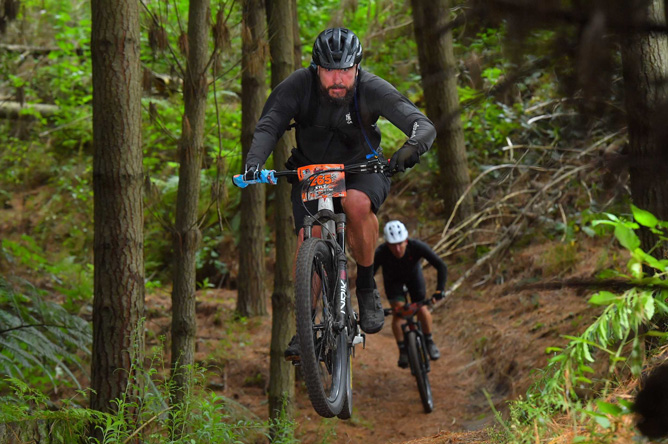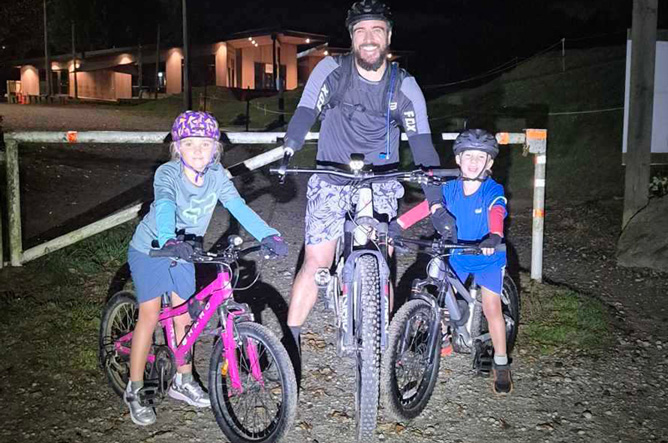With the Foundation’s Help, the Whole Family is now Addicted to Mountain Biking
What started as a sore back on long bike rides has led to a life-changing outcome for Kyle Davies – and a whole new family passion.

Born with a limb difference, Kyle tried a prosthetic as a young child but chose not to wear one, wanting to fit in as a regular kid. Kyle accepted his limb difference, referring to himself as “a one-armed person who just got on with life.”
It wasn’t until his 30s that Kyle’s perspective began to shift. With a young family of his own, he returned to cycling and started tackling longer rides, sometimes up to 50km. Fitness wasn’t a problem but increasing back pain was. Kyle decided to see if Peke Waihanga’s Tauranga Centre could help.
“I didn’t know what I needed – just that “my back was killing me,” Kyle says. “The clinic team was amazing. They were open minded and supportive. They took measurements and worked through a few prototypes.”
The initial prosthetic used a different attachment, which didn’t perform well in wet conditions, so the team secured funding from the Foundation for a Freelock terminal device – a specialised attachment that offered stability, control, and comfort.
Kyle says, “the difference was crazy. I’ve rediscovered my passion for cycling, and now my whole family is addicted to mountain biking. We’re out riding together, doing events and it’s really special.”

Kyle Davies with his young family
Kyle now shares his story with others he sees on the trails who might also benefit. “There are riders out there with limb differences who might not realise help is available. It’s a healthy lifestyle, and it would be a shame for people to miss out on these opportunities because they don’t know where to turn. It’s made the world of difference to me and my family and I’m forever grateful.”
A Freelock terminal device, in the context of upper-limb prosthetics, refers to the terminal device (the part that replaces the hand) on a body-powered prosthesis that utilises a Freelock system for grip and release. This system, often seen in bike-riding prosthetics, allows for a secure, adjustable grip on handlebars or other objects, and can be released quickly when needed.
If you are interested in supporting the Peke Waihanga Foundation, please call 04 385 9410 or email foundation@pw.co.nz.

